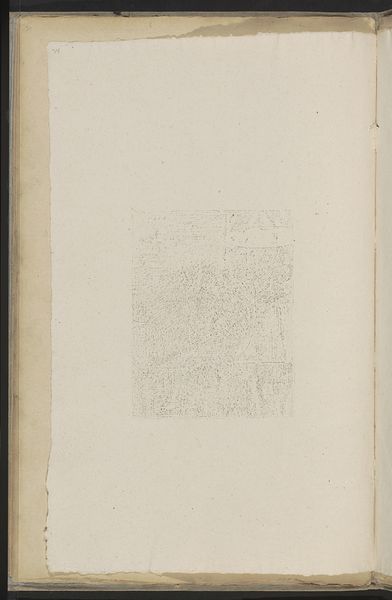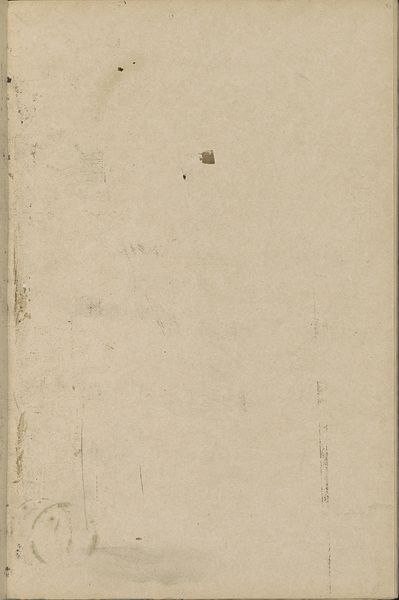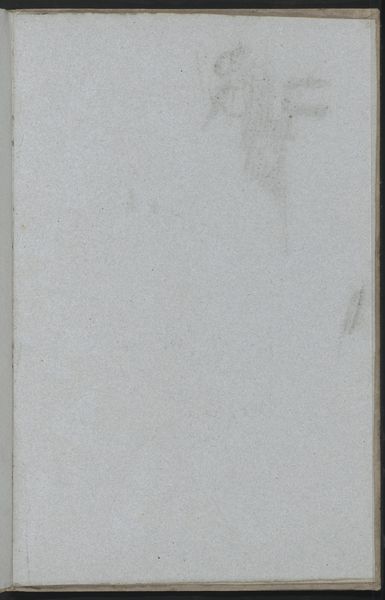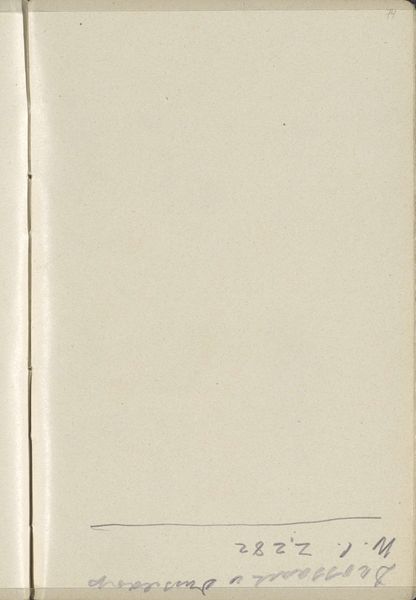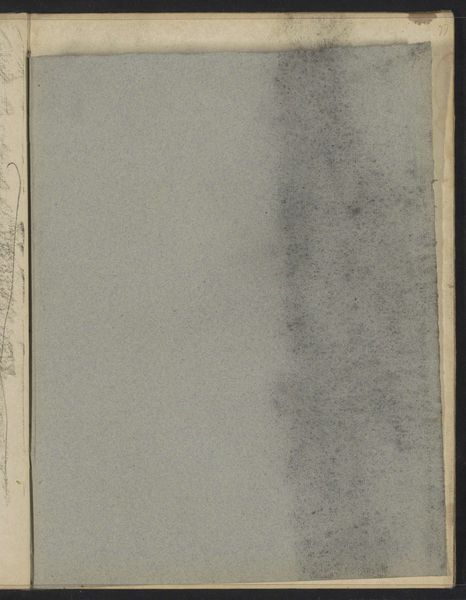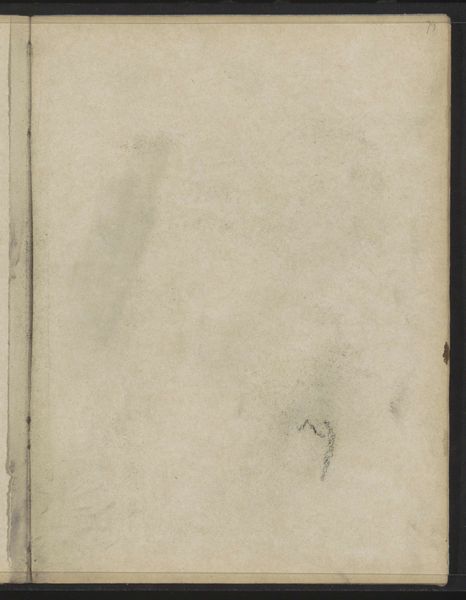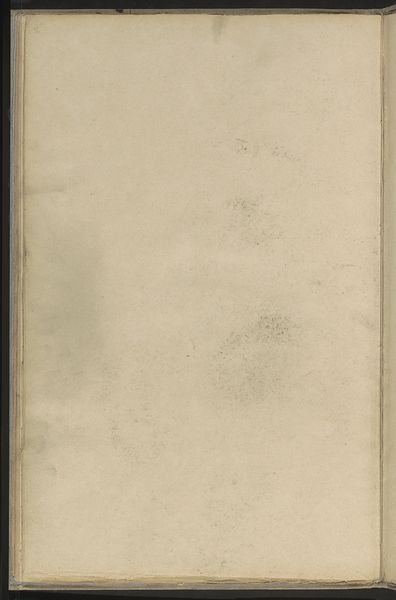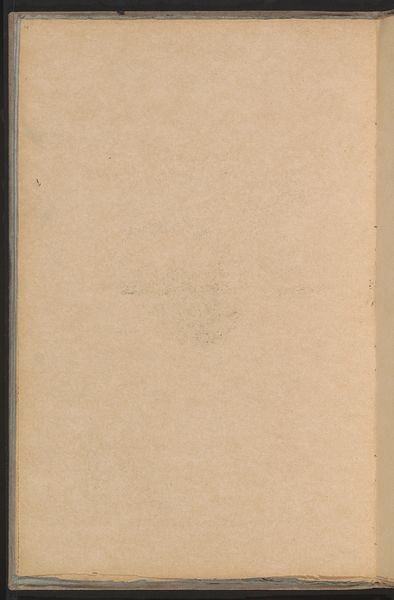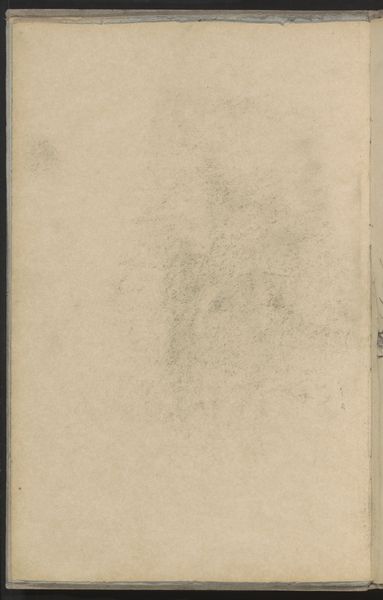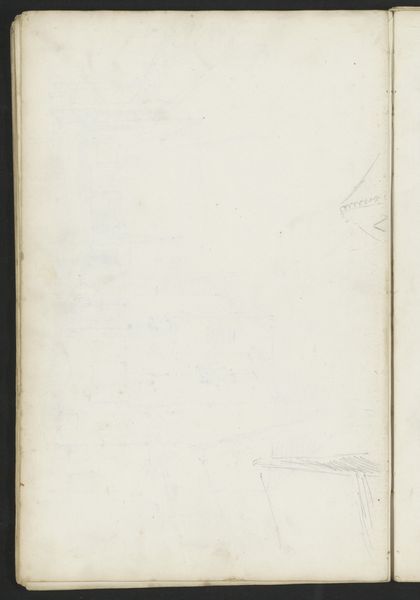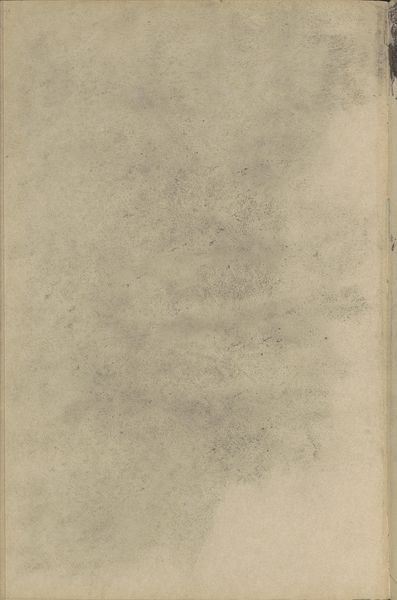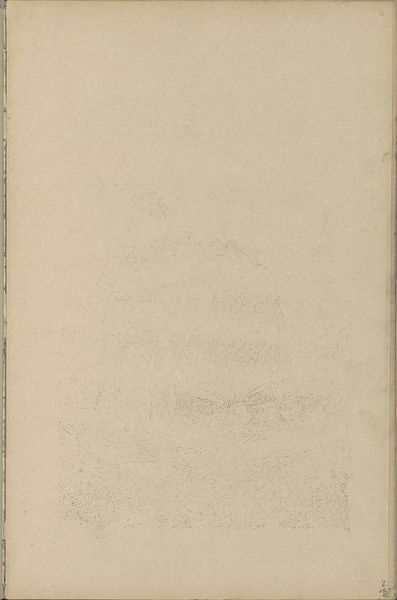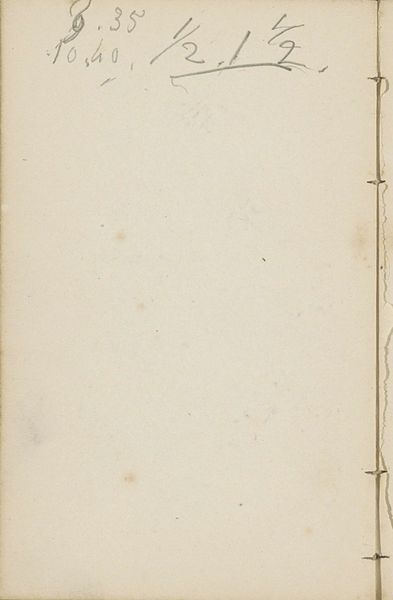
drawing, paper, graphite
#
drawing
#
paper
#
graphite
Copyright: Rijks Museum: Open Domain
Curator: This is Willem Witsen’s "Abklatsch," a graphite drawing on paper, made around 1886 and housed here at the Rijksmuseum. What are your initial thoughts? Editor: The overwhelming impression is one of absence, almost erasure. A ghost of an image struggling to appear from a vast, blank field. I wonder what compelled Witsen to capture something so fleeting, so… resistant? Curator: That sense of disappearance is apt given the title. “Abklatsch” in German literally means “blot” or “smudge,” but it can also refer to a reversed copy, or even something rubbed out. It prompts me to consider memory itself – how easily details fade. The pale smudges in the center, a house with a tower, the residue of the artists initial impulse, reminds me of a fragile recollection barely clinging to existence. Editor: The palimpsestic quality, where one image is layered or partially erased to make way for another, resonates deeply with historical narratives. Whose stories are told, whose are buried or effaced over time? Witsen’s almost vanishing building reads like a metaphor for marginalized communities struggling to remain visible against forces that would rather they disappear. Curator: The image does echo a collective societal forgetting. The blank paper around this smudge feels deliberate and monumental—an attempt to convey the silence in times of radical historical, technological, and cultural change. We project onto this palimpsest what it is we choose to recall and perhaps just as significantly what we wish to conceal or obscure. It almost resembles a photographic negative—the unearthing of truth hidden from light and immediate access. Editor: And thinking of it as a photographic negative gives even more historical and political punch; photography, the tool meant to memorialize and share, in its undeveloped negative, instead reveals that the promise of memorializing and democratization still rings hollow for many of our fellow humans even today. I like this piece's potential as a teaching tool for current events and sociopolitical movements, even though it was not Witsen's direct goal at the time of the drawing's creation. Curator: An utterly incomplete image speaks to how art invites the ongoing labor of empathy. An aesthetic testament to incomplete historical representation in service of present movements, it makes Witsen's rendering still resonant today. Editor: Yes, precisely! It serves as a spectral reminder of unfinished work, of societal promises left unfulfilled. Powerful!
Comments
No comments
Be the first to comment and join the conversation on the ultimate creative platform.
